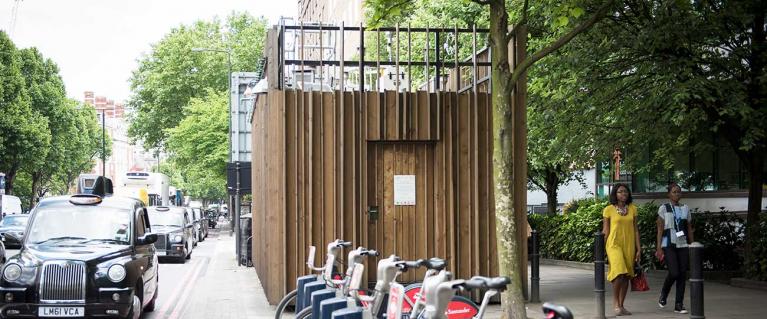
Monitoring and predicting air pollution
Monitoring air pollution
The Mayor of London, Sadiq Khan, announced on 30 January 2018 that he is teaming up with Imperial College London to improve the way he informs the public, particularly those who are most vulnerable, about incidents of poor air quality in the capital.
Imperial College London will directly notify schools, and potentially care homes, and GPs' surgeries soon of moderate, high and very high pollution episodes.
The Mayor is also making it easier for all Londoners, including schools and community groups to take a more active role in fighting pollution. Personal and relatively low-cost monitoring systems are becoming more accessible to buy. These can be valuable tools, but knowing how best to use the systems is vital if the results are to provide meaningful information.
Read more in our new monitoring guidance report.
London’s air quality is constantly monitored at around 100 different locations. These sites are operated and funded by London boroughs.
- the London Air website of Imperial College London records real time and historical monitoring data
- Ricardo Energy and Environment also manages the data sets from some sites within London, more information is on the Air Quality England website
Despite cuts in most pollutants, levels of PM10 and NO2 are still too high in some areas of London. We are working hard to reduce concentrations of these pollutants. However, around 30-40% of air pollution comes from outside Greater London.
Get free air pollution alerts
Between 3 and 8 times a year, London’s air pollution is particularly high. On these days, you can protect yourself and others by avoiding the car and using back streets to walk and cycle instead.
Transport for London (TfL) now broadcasts air quality advice across London whenever pollution is high or very high. You will see notifications at Tube stations, bus stops, river piers, on digital signs along major roads. Information is also published on the TfL website.
London & Bengaluru partnership to tackle toxic air pollution
The Mayor of London, Sadiq Khan and the Mayor of Bengaluru in India, Sampath Raj, announced on 5 December 2017 that they will lead a global partnership of up to 20 other world cities on tackling global air pollution. The initiative will be delivered by the C40 Climate Leadership Group as part of its new Air Quality Network programme.
London’s “Breathe London” network is a major £750,000 trail cutting-edge street-by-street sensor air quality monitoring system which will be used to analyse harmful pollution in thousands of toxic hotspots across the city including near schools, hospitals, construction sites and busy roads. This data will support policy making, and help inform and engage local communities.
Find out more and see the latest data from the network on the Breathe London website.
Measuring air pollution
We predict London’s air pollution levels using a model that estimates how pollution will spread over time and distance. The pollutants modelled for the Mayor’s Air Quality Strategy are nitrogen dioxide (NO2) and particulate matter (PM10 and PM2.5) as these are often linked with health problems. The EU has also set target levels for these pollutants that each member state must achieve.
Every three years we put together the London Atmospheric Emission Inventory (LAEI). Visit the London Datastore to access the latest copy.
This database has information on emissions from all sources in Greater London that can be identified. The current LAEI includes emissions data for the ‘base year’ 2019 and forward projections for years 2025 and 2030. We are work continuously to improve the data and share it with all London boroughs for free.
Understanding different forecasts
The Mayor’s air pollution forecasts are issued by Imperial College London. These are combined forecasts - meaning they are based on a number of public forecasts: airText, Defra (Met Office) and Imperial. As with weather forecasts, there are occasions when the forecast providers will not agree. The Mayor’s forecast will represent the most likely picture drawn from the three forecasts, expected across the whole of London. So, it’s possible that the Mayor’s forecast (which is issued by Imperial) may not be the same as the Imperial's forecast since this is only one of the three inputs.
All forecasts considered in compiling the Mayor’s combined forecast provide information based on the UK Daily Air Quality Index (DAQI). Particulate forecasts relate to a full day (midnight to midnight). There are however differences in the way that current levels for particulate matter (PM10 & PM2.5) are shown between other public forecasts. This is shown on the providers’ websites.
Need a document on this page in an accessible format?
If you use assistive technology (such as a screen reader) and need a version of a PDF or other document on this page in a more accessible format, please get in touch via our online form and tell us which format you need.
It will also help us if you tell us which assistive technology you use. We’ll consider your request and get back to you in 5 working days.